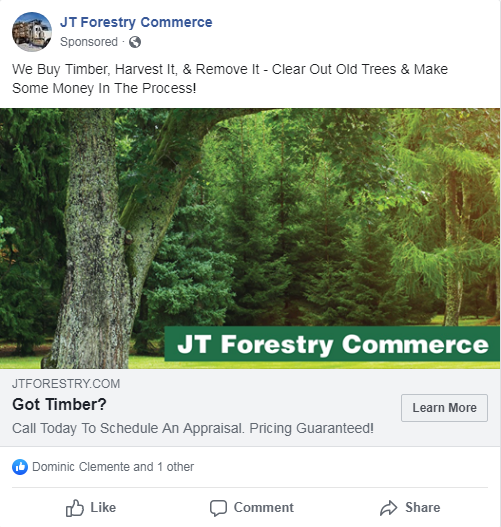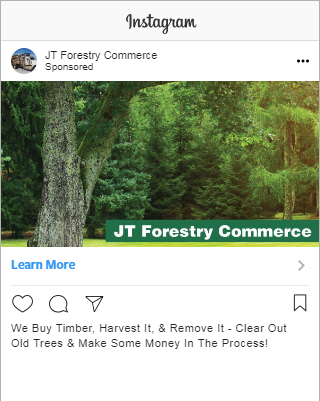What Facebook’s $5 Billion Fine Means to Small Businesses
Updated on July 15, 2021Thanks to a cool $5 billion fine against Facebook from the Federal Trade Commission (FTC) recently, we’re going to see even more changes with Facebook in the coming months…
That is the LARGEST fine EVER imposed against a tech company.
So, point blank:
If you’re considering using Facebook ads — or, if you’re already using them — you’ll want to keep reading, and here’s why:
Facebook is taking away targeting demographics which could render your ads less effective at generating quality leads.
Why would they do that? Well, let’s backtrack a bit…
Due to the now-infamous Cambridge Analytica scandal that infringed upon 87 million Facebook users’ personal data, Facebook will be tightening the lock on which data-providing companies they allow onto their advertising platform.
In case you didn’t know:
Facebook partners with certain big data companies in order to integrate not-from-Facebook data into their own data. This partnership gives marketers like you and I demographic targeting options.
Simple example:
Let’s say you’re a realtor and you want to run Facebook ads targeting prospects based on their homeownership.
That homeownership data is not supplied by Facebook, but instead by one of their data partners.
When you think about it, it’s kind of obvious — you don’t enter your homeownership status into Facebook alongside your relationship status and hometown, right?
So, where does Facebook get this type of data?
From one of these big data boys:
- Acxiom
- Epsilon
- Experian
- Oracle Data Cloud
- TransUnion
- WPP
Massive data companies supplying Facebook offline data…
Plus Facebook’s own trove of personal data, scraped from its ~2 billion users that willingly supply it…
It’s like a match made in heaven:
All the data a marketer could want packed into Facebook’s ads platform, ready for you to click and pay to use in your marketing campaign!
But, uh oh. There’s a problem!
Enter back in: the Cambridge Analytical scandal of 2018 —
Massive security breaches and leaked personal data unbeknownst to millions of users.
Therefore —
Facebook had to make a change.
Here’s one of the remedies they’re implementing to tighten down on security:
Facebook is removing several data points (supplied by those data partners listed above) that are used to target your ideal client.
Here are a handful of examples of demographical data that will soon go away:
- Homeownership
- Income and financial data like net worth
- Purchase behavior such as specific types of cars, clothing, stores
- Travel behavior
- Company information, such as size
- Charitable donations
- Certain job titles
You may be thinking:
That’s great! Or who cares?
Well, if you’re a business that depends on those demographics, you and your marketing budget will care.
And this is just the list of demographics we’re supplied now — it could lengthen as the months pass. Who knows! It’s Facebook, and it changes every 4 months it seems.
So, instead of running ads based on cold, hard data supplied from data companies, here’s what we’re largely going to see in terms of targeting…
Facebook is moving almost exclusively to what’s called “Interest Categories” targeting. Meaning, their ads will target users who — according to their algorithms — have expressed an interest in the category you’re selecting.
Let me break it down for you:
Facebook tracks and records this data about their users:
- Their search history
- The pages they’ve liked
- The content they’ve liked
- The ads they’ve clicked on
Kind of crazy when you spell it out like that!
So, if you’re running Facebook ads for your business (and I hope you are!), you’ll want to pay attention to which demographics you’re targeting, because some of them could disappear over the next few months.
What am I driving at?
Two things.
First:
I wanted to break down this change for you because I know, as a small business owner, how difficult it can be to keep up with social media changes and trends.
I actually met with my amazing Facebook Ads Specialist to get the lowdown on these changes because they can seem so complicated to keep up with!
And secondly —
You don’t have to rely on Facebook for the meat of your targeting.
In fact, I recommend my clients rely on Facebook ads primarily for RE-targeting. (That is when you visit someone’s website and start seeing their ads all over the internet.)
After all, a mailing list, based on cold hard numbers (and not flaky algorithms or scandal revelations) can give you all the demographics you need to reach your ideal client directly.
Here are just some of the demographics you can select in a mailing list:
- Income
- Zip code
- Age
- Gender
- Home value
- # of years resident in a home
- Whether there are children in the home
- What magazines they subscribe to
- Ages of children in the home
- Whether there are pets in the home
- Credit score
- And much, much more
That way, you’re not relying on Facebook’s data. You’re piggy-backing Facebook onto a tried-and-true method that’s worked for decades: mailing lists chock-full of your ideal prospects.
Here’s a campaign we recently ran for a lumber client that does just that…
In fact:
We took their targeted mailing list, uploaded that to Facebook, and hit those SAME people with their online ads using Everywhere Small Business.
Here’s the Facebook ad:

And the matching Instagram ad:

Plus, a Google ad, which gets displayed on thousands of internet websites:

And here’s the postcard that hits prospects’ mailboxes at the same time these ads run online:

Here are the results from this campaign, and note…
Their campaign is only 6,000 postcards in, yet check out their numbers:
- Facebook, Instagram, and Google ads viewed 128,823 times
- Ads clicked 794 times
- 36 tracked calls
Their mailing list consists of property owners with 10+ acres — pretty specific!
And note:
We could NOT target property owners with 10+ acres on Facebook, which is another reason why we upload the mailing list to Facebook.
In other words —
Facebook’s own targeting demographics were definitely not enough for this client’s campaign. (All we targeted on Facebook was a radius around the area the client usually buys from.)
So the client’s Facebook ads hit the following:
The people from his mailing list (property owners with 10+ acres)
PLUS:
More people located in the radius around the area he usually purchases from.
This campaign was possible using the all-in-one marketing program, called Everywhere Small Business, which makes targeted online-offline marketing across multiple channels simultaneously both simple and affordable.
Because let’s be honest:
Love Facebook or hate it —
We’re all using it, and I can pretty much guarantee your prospects spend time on it.
If you need any help with your digital and direct mail marketing, give one of my marketing consultants at 800-628-1804. They can help you figure out the best marketing plan for your budget and bottom-line goals based on other similar businesses in your industry.
Plus — their advice is 100% FREE.
Best,
Joy

5 Comments
Nice breakdown of the limitations of FB ads and how best to work with it (Re-marketing and Custom audiencing) + I liked the campaign example. Thank you.
So glad you liked the article, Vincenzo! Thank you for reading!
The page was good and lovely
Thanks, Josh!






Excellent! I was hearing and thinking about this Facebook story from a personal viewpoint. I had not yet even considered the impact from a business perspective. Very timely article.